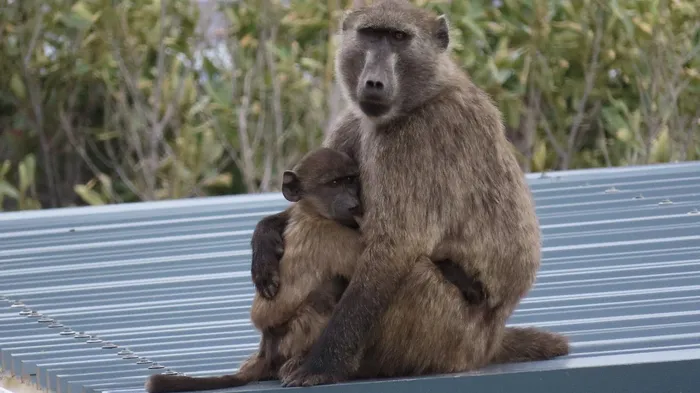Baboon action plan released, but civil group raises concerns

Cape Peninsula Civil Conservation has raised serious concerns about the newly released Baboon Management Action Plan, saying key welfare and accountability issues remain unresolved despite changes to the plan.
Image: Supplied
A new plan to manage the Cape Peninsula’s baboons has sparked concern among conservationists and residents.
The Cape Peninsula Baboon Management Joint Task Team (CPBMJTT), which includes SANParks, CapeNature, and the City of Cape Town, has released the final Baboon Management Action Plan.
The plan outlines how authorities intend to implement the Cape Peninsula Baboon Strategic Management Plan and was approved by all three bodies before being made public on Thursday, November 20.
Despite the approvals, questions remain over the plan’s impact on the animals and local communities.
Cape Peninsula Civil Conservation (CPCC) has raised strong concerns about key measures, including a new sanctuary, extensive fencing, population controls, and waste management strategies.
According to Lynda Silk, chairperson of the CPCC, the release marks an important point in a process that began in June 2022.
She said the organisation had invested “an enormous amount of time, energy and expertise” into the review by consulting members, engaging with residents, attending all official meetings and obtaining legal advice.
Ms Silk said she was “extremely disappointed” that the final action plan was circulated to the media and public before it was made available to members of the Baboon Advisory Group.
She said this happened despite the plan being completed on Friday, October 31.
“It feels disrespectful to the constructive role we have played throughout this process,” she said.
One of the most significant changes in the final plan is the withdrawal of an earlier proposal that would have seen about 120 baboons removed from four troops. No entire troops are now scheduled for euthanasia.
The CPCC welcomed this, but Ms Silk said the organisation remained concerned that individual baboons would still be killed and that this could disrupt troop stability.
“This remains a major worry for us,” she said.
Authorities have taken a firm position that baboons will no longer be tolerated in Simon’s Town or Constantia.
Some residents have welcomed the decision, but others have expressed sadness and frustration.
According to Ms Silk, one resident said: “It’s extermination by attrition. They’re just hoping we’d be too busy being grateful that it wasn’t happening all in one go, to notice.”
Another resident said they believed the authorities would ultimately remove all baboons from these areas.
The CPCC said these comments showed a growing fear that the phased removals would lead to baboons disappearing completely.
A new baboon sanctuary is planned for construction in January 2026 on Plateau Road near the entrance to the Cape Point Reserve.
It will house selected baboons from the Seaforth and Waterfall troops and operate as a non-profit tourist and educational facility. All healthy males will be vasectomised, and any baboon that does not pass a veterinary health check will be killed before relocation.
Authorities have said that the baboons “will live as wild baboons”, but the CPCC has questioned whether a troop with no infants or juveniles for up to 20 years can be considered socially stable or natural.
According to Ms Silk, there are about 15 baboons in Seaforth and around 42 in Waterfall. She said it is still unclear how many will survive the process, as only those passing health assessments will be moved.
Major changes to baboon movement are also planned. Authorities intend to build a long-line fence from Orpen Road to Silvermist from January next year to keep northern Tokai troops out of residential and agricultural areas.
Additional fencing will shift the CT1 and CT2 Constantia troops north of Constantia Nek, preventing them from moving back into the area.
The CPCC criticised the lack of accountability measures for residents whose unsecured homes and waste practices continue to draw baboons into suburbs.
The organisation pointed to the recent deaths of two Slangkop baboons that entered homes left open by residents, saying the people involved faced no consequences while “the baboons paid with their lives.”
The Action Plan also sets population limits for northern and southern sub-populations and states that baboons will be euthanised if numbers exceed these limits for more than six months.
Incursions into urban areas will no longer be accepted, with rangers and fencing used to keep baboons out. A baboon-proof waste strategy will be rolled out, and a wildlife by-law is expected by 2028.
Authorities say the plan aims to maintain a healthy, free-ranging baboon population with minimal conflict and reduced reliance on aversive management tools.
The next formal review of the plan will take place in 2030.